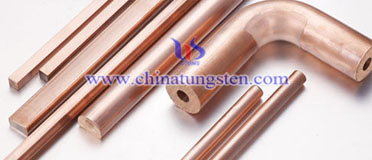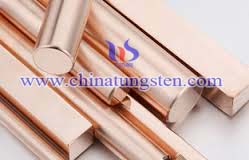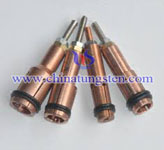Chrome Zirconium Copper Alloy
Chrome Zirconium Copper Alloy Description
Chromium zirconium copper alloy are composited by three material. And the common chemical composition of this alloy is 0.5~1.2% chromium, 0.03~0.3% zirconium and the other is copper. Cu.Cr.Zr. is often the best choice for applications where a combination of high electrical and thermal conductivity and high strength at higher temperatures is required. Studies have shown that of all commercially available electrode materials for spot welding mid stee, the lowest electrode costs are obtained with chromium-zirconium copper. The properties of Cu-Cr-Zr are obtained by alloying and through heat treatments combined with cold working. The metallurgical behaviour of this alloy is based on transformations at the atomic level.
Chrome Zirconium Copper Alloy Application
Chromium zirconium copper alloy are used widely in areas where high electrical and thermal conductivity are required combined with good mechanical properties. This is a high strength, seam, high conductivity alloy for spot, butt and projection welding which is ideal for plain as well as coated and galvanized sheets.
Uses include Resistance Welding Machine Electrodes, Seam Welding Wheels, Spot Welding Tips, Flash Butt Welding Electrodes, Anvil Contact Bars, Electrical Switch Gear Contacts & Terminals, Electrode Holders, Cable Connectors, Current Carrying Arms and Shafts, Circuit Breaker Parts, Heat Sinks, Short Circuit Rings, MIG welding contact tubes and many other applications where Copper would normally be the ideal choice for High Conductivity but is just not Strong enough.
C18150 Chromium Zirconium Copper is used extensively for cap style resistance welding electrodes. Evidence suggests that it can provide less sticking and resist deformation longer than its chromium copper counterpart in some specific situations.


Chrome Zirconium Copper Alloy Production
 The first heat treatment stage is solution annealing at approximately 1000 °C. At this temperature the chromium and zirconium atoms are randomly distributed in the copper matrix. The material is then quenched in water. Between 400 and 700 °C the chromium and zirconium atoms have a tendency to form precipitates in the copper matrix, but the cooling is too rapid for precipitation to take place. The result is a supersaturated solid solution. The strength of this structure is only slightly higher than that of pure copper and foreign atoms in the copper matrix considerably reduce the electrical conductivity.
The first heat treatment stage is solution annealing at approximately 1000 °C. At this temperature the chromium and zirconium atoms are randomly distributed in the copper matrix. The material is then quenched in water. Between 400 and 700 °C the chromium and zirconium atoms have a tendency to form precipitates in the copper matrix, but the cooling is too rapid for precipitation to take place. The result is a supersaturated solid solution. The strength of this structure is only slightly higher than that of pure copper and foreign atoms in the copper matrix considerably reduce the electrical conductivity.
The supersaturated solid solution serves as a starting point for further heat treatments.
The properties of Cu.Cr.Zr. are achieved by ageing the material at a temperature below 500 °C.
The ageing conditions are very critical and are chosen so that the precipitations are coherent with the copper matrix, i.e. the atomic layers of copper continue through the precipitations. Although the atomic layers continue through the boundary of precipitates the lattices on both sides of the boundary do not match each other completely. This mismatch causes strain which is responsible for the high mechanical strength.
Another consequence of ageing is that, as the number of foreign atoms in the matrix decreases the electrical conductivity becomes considerably higher. The mechanical properties of Cu.Cr.Zr. are further improved by introducing a cold working process between solution annealing and ageing.
Any feedback or inquiry of Tungsten Copper Alloy Products please feel free to contact us:
Email: sales@chinatungsten.com
Tel.: +86 592 512 9696 ; +86 592 512 9595
